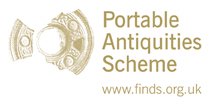Server check!
You are on the training database
Swords
There are probably over 1000 British Bronze Age swords or sword fragments in collections today. Bronze Age swords come in a huge variety of different shapes and sizes and this is perhaps because each one could have been created for a specific individual. A large number of swords have been dredged from rivers therefore making it difficult to know where their exact original deposition location was. The huge numbers of finds in rivers and other 'wet' locations, such as bogs, leads to the theory that many swords were ritually deposited. Some of these swords are large and made to a very high quality which supports the theory that they were objects of ceremony and prestige.
There are roughly 130 swords on the Portable Antiquities Database and the majority of these are small fragments. Finding a Bronze Age sword intact is very rare. It can be impossible to identify the type of Bronze Age sword from a fragment as a definite identification requires the hilt and the shape of the blade. Below are a few of the most common types of sword found in England and Wales.
Hemigkofen Swords
Example = 1862,0912.2 http://www.britishmuseum.org/research/search_the_collection_database/search_object_details.aspx?objectId=808105&partId=1
Date = 1200-1100 BC
Distribution =lower Thames valley
Comment = Hemigkofen swords have leaf shaped blades and high flanged hilts. The shoulders and thin web have large ragged rivet holes and there are two types. True Hemigkofen swords have six or eight rivet holes while variant Elsenfeld has two and variant Uffhofen has four.
Erbenheim Swords
Example = 1862,0212.1 http://www.britishmuseum.org/research/search_the_collection_database/search_object_details.aspx?objectid=807776&partid=1
Date = 1150-1050 BC
Distribution = south east England
Comment = The hilt of Erbenheim swords has high flanges and a thin web with ragged rivet holes as well as being quite fat and bulging. They have a short pommel tang and large shoulders and the blades are long with a narrow leaf shape. There are some local variations however which can make them difficult to identify.
Rosnoen Swords
Example = 2005,0503.17 http://www.britishmuseum.org/research/search_the_collection_database/search_object_details.aspx?objectid=3103646&partid=1
Date = 1350-1200 BC
Distribution = All over Britain especially South East England. None found in Ireland
Comment = Rosnoen swords have a rectangular tang with four rivet holes in two pairs. The shoulders are very small or not present and the blade is straight. It is likely that these swords were imported from France and they have been found in hoards all over Europe.
Solid Cast Hilts
Example= 1870,1013.1
http://www.britishmuseum.org/research/search_the_collection_database/search_object_details.aspx?objectid=807778&partid=1
Date = 1300-1150 BC
Distribution = Three of the four that have been discovered were found in Cumbria
Comment = As the name would suggest these swords have solid hilts and are very rare. They have heavy straight blades, plain butt, oval or lozenge shaped section, and shoulders which taper to a straight grip with a larger pommel. It has been suggested that these swords were experimental as few have been found and they are far less decorative than the solid hilt swords on the continent. It seems they are a hybrid of indigenous dirk/rapiers and heavier continental blades.
Ballintober Swords
Example = WG.1251 http://www.britishmuseum.org/research/search_the_collection_database/search_object_details.aspx?objectId=807861&partId=1
Date = 1300-1150 BC
Distribution = Central and North Ireland and South and east England. Mainly the Thames valley.
Comment = Ballintober swords were the first swords designed and made in Britain for slashing not thrusting. They have a similar hilt to the Rosnoen swords but have more prominent shoulders which are pointed. The blade is ridged and leaf shaped and seems to be a hybrid of the leaf-shaped continental swords and the British rapier. They have four rivet holes or notches
Wilburton Swords
Example = WG.1269 http://www.britishmuseum.org/research/search_the_collection_database/search_object_details.aspx?objectid=812150&partid=1
Date = 1000-900 BC
Distribution = generally East Anglia, the Thames valley and Hampshire although they can occur in other areas.
Comment = Seven variants, A, B, C, D, E, F, G, of the Type Wilburton sword have been identified dated to the Wilburton phase (1000-900 BC). Wilburton swords are recognisable by their short curved ricasso, prominent shoulders and flared hilt terminal. The swords have a leaf shaped blade and compared to earlier swords there are fewer and larger rivet holes.
Ewart Park Swords
Example = WG.1241 http://www.britishmuseum.org/research/search_the_collection_database/search_object_details.aspx?objectid=807784&partid=1
Date = 950-800 BC
Distribution = All over the UK. Large concentration in the Thames valley.
Comment =Most Bronze Age swords in museum collections in Britain come from the Ewart Park Phase. Generally these swords have a bulging shape in the blade at the midway point before narrowing towards the shoulders and the terminal which is fan shaped. Size and number of rivets vary greatly. These swords developed from the Wilburton swords with little influence from the continent and it appears they first occurred in Northern Britain.
Carps Tongue Swords
Example = NARC2583, 1880,1124.33 http://www.britishmuseum.org/research/search_the_collection_database/search_object_details.aspx?objectid=812648&partid=1
Date = -850-700 BC
Distribution = Thames valley and South Eastern English coast. Some finds further west and north.
Comment = Carps tongue blades are straight and three quarters of the way along it tapers into a carps tongue point. Many of the hilts end in a T-shape and the hilt tang is quite wide. The blade section has a midrib with 2 grooves either side which stretch all the way to the tip. Complete swords are rare and those with reliable find spots are from watery locations. It has been suggested that this is a French type of sword that was brought to Britain as scrap and then perhaps became votive offerings because they were different from British swords.
Gündligen Swords
References
- Pearce, S. (1984) Bronze Age Metalwork in Southern Britain. Aylesbury: Shire Publications.
- Burgess, C., Colquhoun, I., (1988) The Swords of Britain. Munchen: C. H. Beck'sche Verlagsbuchandlung


